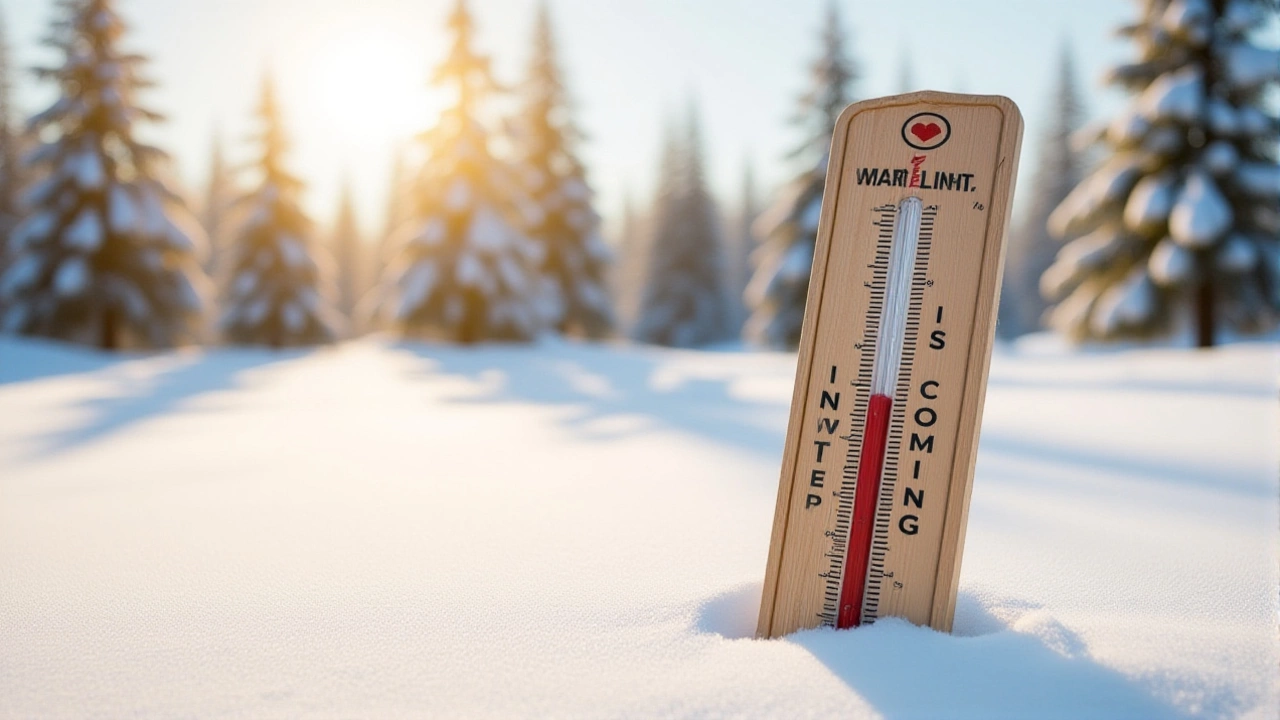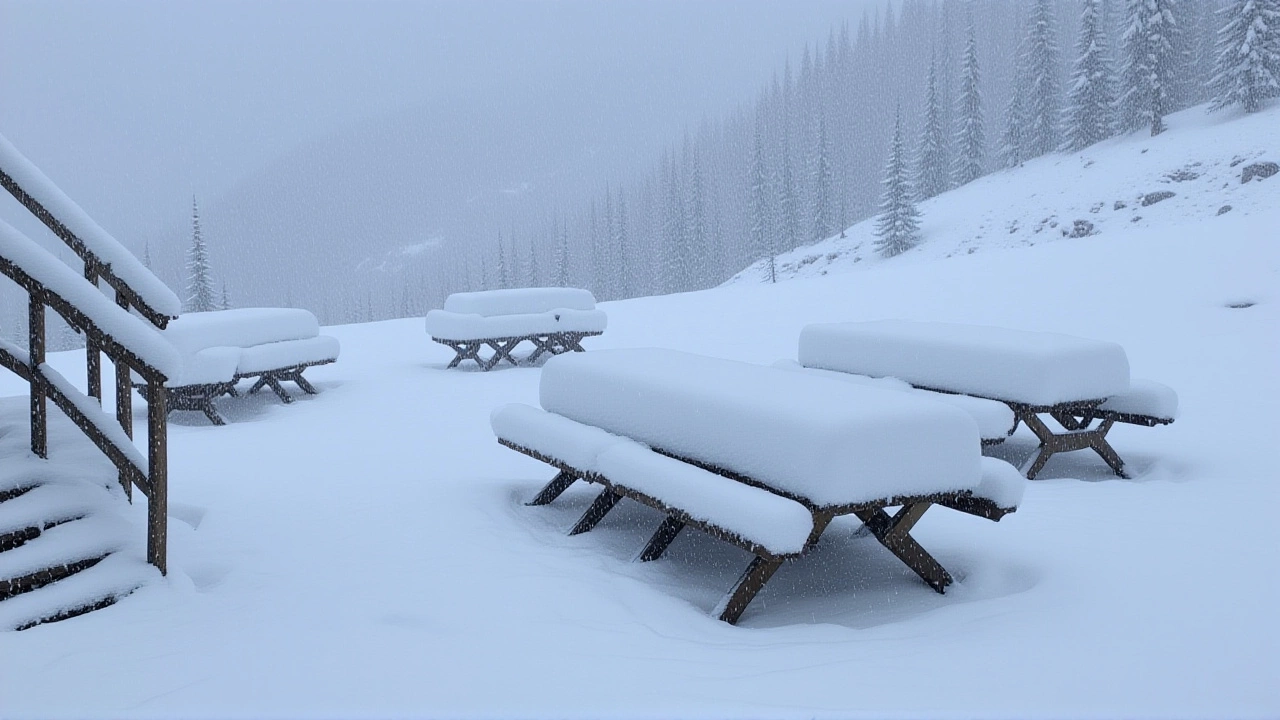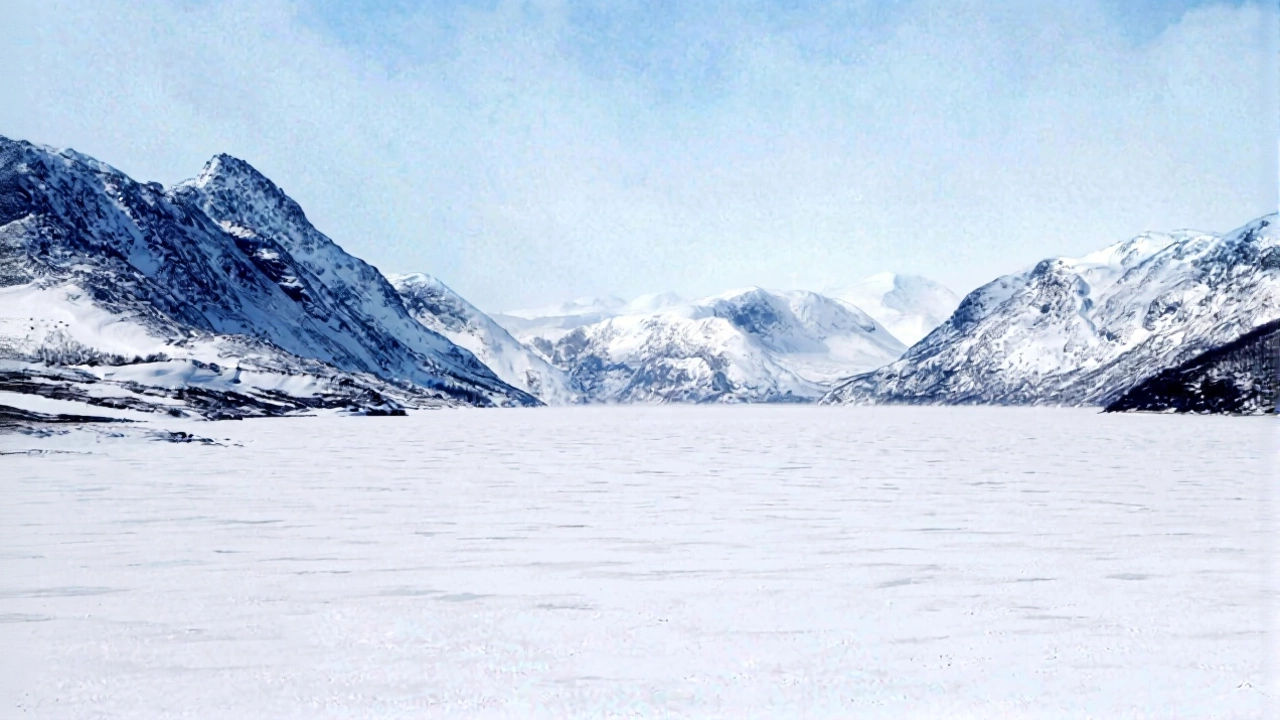When Leena Ylä-Mononen, Executive Director of European Environment Agency released the agency’s State of Europe’s Environment 2025 report, the headline was unmistakable: snow cover across the continent is disappearing faster than any other climate signal. The findings, published on 30 September 2025, compare satellite and ground‑based observations from the 1960s to today and show a 15 % drop in average winter snow extent. Below 2,000 m, many Alpine valleys now see up to 34 fewer snowy days per season than they did in the 1970s.
Why the snow is melting faster than ever
Temperatures in Europe have climbed about 1.5 °C since pre‑industrial times, with the steepest gains in the Arctic fringe and the Mediterranean basin. Climate models used by the European Environment Agency project another 2‑5 °C rise by the century’s end if emissions keep their current trajectory. That extra warmth pushes the freezing line higher, turning former snow‑catchers into rain‑driven slopes.
One striking detail from the report is how altitude matters. In regions under 1,500 m, the number of days with any snow has fallen by roughly 22‑27 days in the north and 24‑34 days in the south. In the 1,500‑2,500 m band, a projected 4 °C winter minimum would shave off more than 100 days of snow per year, according to regional climate simulations. Even a modest increase in winter precipitation cannot compensate; it merely postpones the inevitable loss at lower elevations.
Impact on winter sports and local economies
For ski resorts, the numbers are more than academic. The average European ski season has shrunk by about one month since the 1970s, a trend already felt in the French Alps, the Austrian Tyrol, and the Swiss cantons. Smaller resorts, especially those perched below 1,800 m, report reduced visitor numbers and mounting pressure to invest in artificial snowmaking – a costly and energy‑hungry stop‑gap.
"We've seen a clear shortening of the reliable snow window," says Teresa Ribera, Executive Vice‑President for Clean, Just and Competitive Transition of the European Union. "The data are a stark reminder that our climate ambitions cannot wait. The livelihoods of mountain communities depend on it."
Ecological consequences beyond the slopes
Alpine ecosystems are finely tuned to seasonal snow cover, which insulates soils, feeds groundwater, and sustains plant phenology. Shrinking snowpacks have already triggered earlier melt‑off, exposing soils to freeze‑thaw cycles that accelerate erosion. Glacier retreat is accelerating; the European Alps have lost roughly 35 % of their ice volume since the 1980s, raising concerns over long‑term water security for the Po, Danube, and Rhône basins.
Permafrost, once common above 2,200 m, is now retreating, raising the risk of rockfall and landslides that threaten villages and transport corridors. In the south of France, winter precipitation has actually decreased, while the north sees a slight uptick – a pattern that underscores how climate change reshapes regional weather belts in a highly localized way.

What policymakers are saying
During a press briefing in Brussels, Leena Ylä‑Mononen warned that Europe cannot “lower its climate, environment, and sustainability ambitions.” The EEA’s report, co‑authored by experts from 38 nations, emphasizes that without accelerated mitigation, the continent will face heightened flood risk, water scarcity, and biodiversity loss.
European Commission Vice‑President Ribera echoed the sentiment, calling the report "a stark reminder that Europe must stay the course and even accelerate our climate and environmental ambitions." She highlighted recent heatwaves in Germany, France, and the Netherlands as proof that extreme events are no longer anomalies but new normals.
Looking ahead: scenarios and solutions
If the EU meets its 2030 climate targets, the models suggest a modest slowdown in snow loss – perhaps preserving an additional 10‑15 % of snow days at mid‑altitudes. However, experts stress that adaptation must go hand‑in‑hand with mitigation. Investment in forest restoration, sustainable water management, and low‑carbon tourism can buffer some impacts, while broader decarbonisation will ultimately protect the snow‑dependent economies of the Alpine region.
Local initiatives are already emerging. In the Austrian municipality of Zell am See, authorities are piloting “snow‑smart” land‑use policies that restrict new construction on vulnerable slopes and allocate funds for renewable energy projects that offset the carbon footprint of snowmaking.

Key Facts
- European snow cover down 15 % since the 1960s (EEA data).
- Winter temperatures up 1.5 °C; projected rise of 2‑5 °C by 2100.
- Average ski season shortened by roughly one month since the 1970s.
- Below 2,000 m, snow days reduced by up to 34 days per season.
- Glacier volume in the Alps lost ~35 % since the 1980s.
Frequently Asked Questions
How will reduced snow cover affect water supplies for European cities?
Snowpack acts like a natural reservoir, releasing meltwater in spring and summer. With less snow, river flows in the Po, Danube, and Rhône will become more variable, potentially stressing drinking‑water treatment plants and hydro‑electric generation during dry periods.
What alternatives do ski resorts have if natural snowfall keeps declining?
Many resorts are expanding artificial snowmaking, but it requires large energy inputs and water withdrawals. Longer‑term strategies include diversifying tourism (summer activities, wellness retreats) and investing in renewable energy to offset the carbon cost of snow guns.
Why are low‑altitude regions losing snow faster than higher elevations?
Temperature rises have a greater proportional impact near the freezing point. At 1,000‑1,500 m, a 2 °C increase can shift precipitation from snow to rain, whereas peaks above 2,500 m remain cold enough to retain snow despite warming.
What role does the European Environment Agency play in addressing this issue?
The EEA collects and analyses climate data, produces policy‑relevant reports like the State of Europe’s Environment 2025, and advises EU institutions on mitigation and adaptation pathways based on scientific evidence.
Can reforestation help restore snow‑dependent ecosystems?
Yes. Healthy forest cover reduces soil erosion, improves water retention, and can modestly lower local temperatures through shade and evapotranspiration, giving remaining snow a better chance to survive longer into the season.


